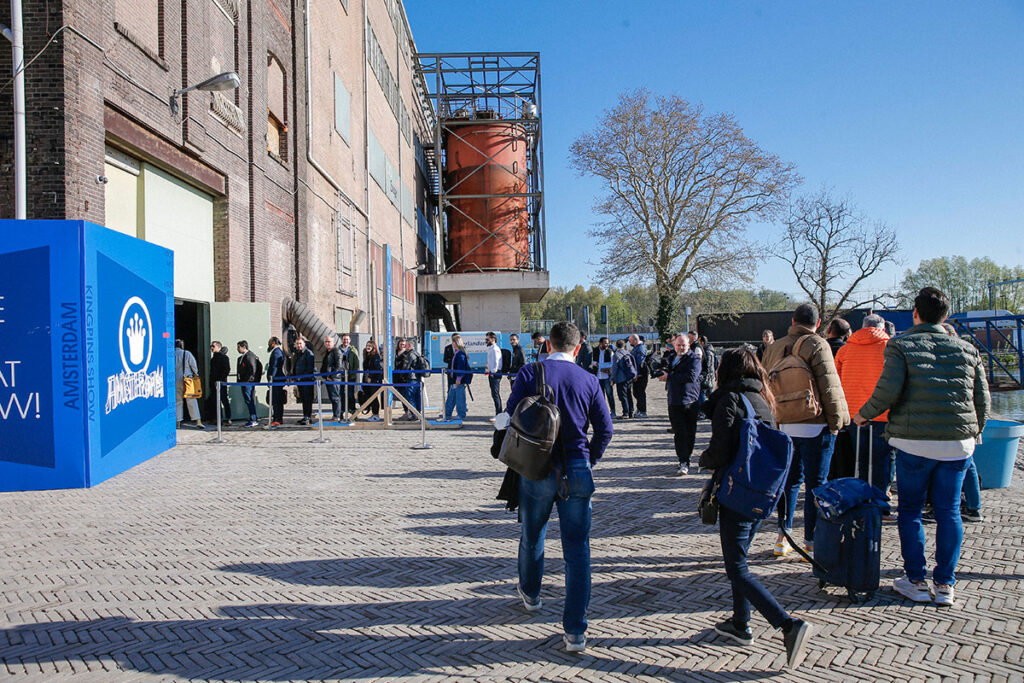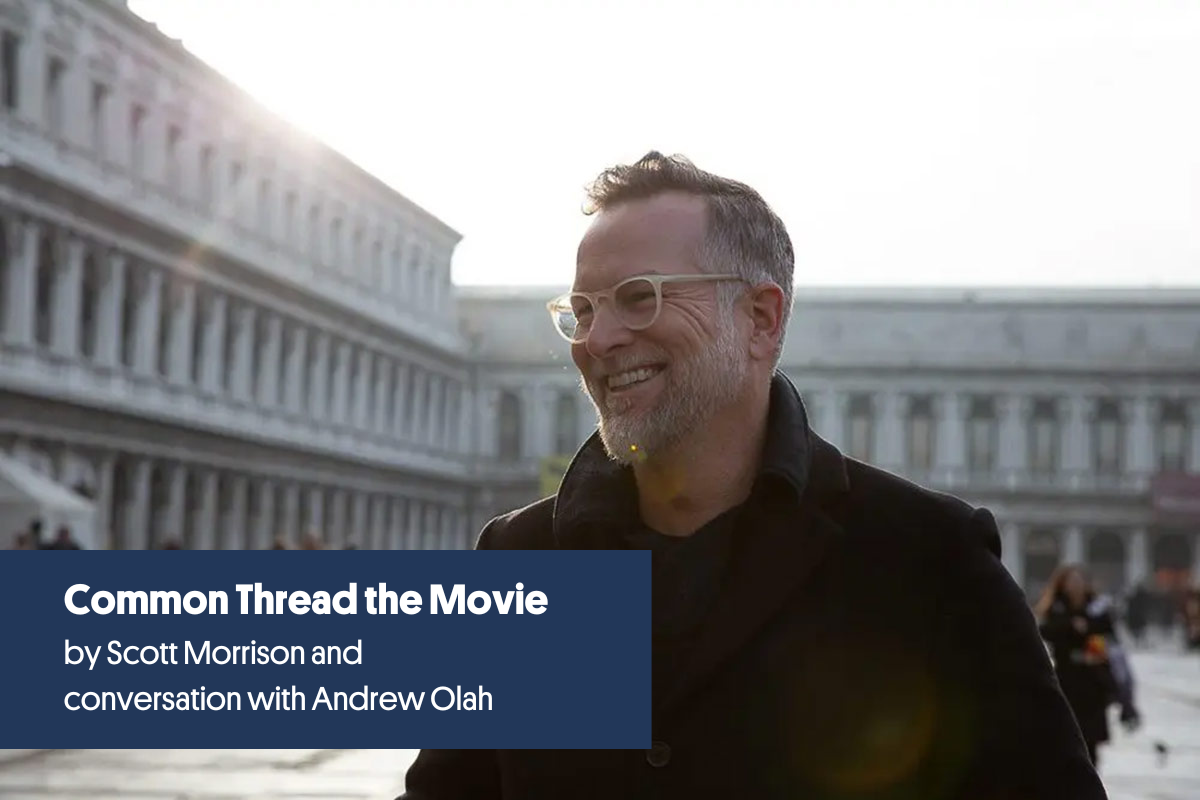Founder’s Letter: Kingpins Returns

We did it!
Two and half years between shows. Happy exhibitors. New venue (that likes us and wants us back). Our attendees seemed to have fun — even those that got Covid.
Think about that: Happy people despite Covid. I think that’s about as good as it gets.
Let me assure you, I am not being flippant about a contagious disease or a global pandemic. We all have Covid stories. Some are wildly more horrible than others. Everyone has their tale, but one thing I can certainly say is that unlike many people, Covid and the pandemic taught me absolutely nothing. Survival, both physically and financially, is not a lesson but a trauma. I’ll never forget it, because I cannot.
In Amsterdam, I was thrilled to see that our exhibitors are back at it, creating and talking about investments, new products and how to be more sustainable. For the first time in my memory, there was a lot of talk about regenerative cotton and carbon-positive cotton. There was Blue Infinity — the new way to do blue — as well as a host of new ideas bubbling throughout Sugar City. You could feel the energy and ideas in the air.
For those that love stats, 800 or so brands, NGOs and companies visited our event. More than 1,200 individuals (if we were able to catch and count you) showed up and we served 3,845 espressi.
I liked our water setups throughout the show, but hated that it was not cold nor was there ice. Our food was good — not fabulous salads like New York — but I was never hungry the whole time and the Kingpins food cards worked. Honestly, I’m not complaining (even though I have in the past).
Some things will change for the next Amsterdam show in October. We know very well what worked and what did not. Hopefully, our visitors will be pleasantly surprised by the differences. One thing I can share is that we are working on our men’s washroom, which was kind of crumby football stadium-style and a place I was not so excited to enter (but happy to leave).
I am sorry the elevator to the third floor was delayed by Covid. But I’m 68 and I bounced up and down those stairs over and over for two days and am fine with taking the stairs for one or two more shows until the elevator is ready.
Thank you to our sponsors. Thank you to our Vivian Wang-led team. And thank you to all exhibitors who supported us throughout Covid. Those people, those companies — I love the supply side of our business — were stoic and solidly behind Kingpin’s survival. We are grateful.
On another note — and an exciting one — Bluezone invited the Transformers Foundation to present at their shows. Transformers Foundation was born from Kingpins Transformers, which was conceived from the early Kingpins seminars.
The Foundation was funded and continues to be supported and spearheaded by concerned members of the denim supply chain, including Candiani, Lenzing, Lycra, Diamond Denim, Tonello, Crescent Bahuman, Prosperity Textiles, Sundown Farms and Bowles Farms, Rudolf Group and, of course, Kingpins. We all share the common belief that more can be done to make our industry more sustainable and as a group, we are seriously keen to help others change the world for the better. There is also a vibrant board of directors who I call “the plumbers” because they do all the work.
The Foundation’s mission is to green up the denim world as fast as humanly possible and to provide clear data to wipe the green washing slate clean. We are making huge strides in our work and an example of that is our report, Cotton: A Case Study of Misinformation, which was released on World Cotton Day. We are really proud of it. While the report in itself is a must read (call me biased), what is most rewarding, is that so many in the cotton industry — from Australia to Bremen to Liverpool or Phoenix — have endorsed our report or, at a minimum, “encouraged us.” This is a sign that the global industry can align and agree, and use the same data in order to make the right decisions about what is best in our industry.
A bunch of us work hours each day on the Foundation researching, educating and reporting. The supply chain holds enormous knowledge about how to make denim more sustainable and it has a clear view of who is doing what (and who is not).
Bluezone inviting the Transformers Foundation to speak at its event is a dream because the Foundation’s ambition has always been to spread its message throughout the denim world. We hope other shows and events also join us to help Transformers amplify best practices and the road to sustainability and demonstrate how we can collaborate and speak in a unified voice — to not only the industry, but to NGOs and legislators.
Together, we can change the industry for the better and give buyers a sustainable product. If we all work alone, we will operate at a snail’s pace and many of us won’t live long enough to see impact. Faster, in this case, is better.
The future of the Kingpins Show is directly tied to the Transformers Foundation. Shows need to express and guide and we are working on how to bring the latest and the best in class in sustainable innovation, practices and evaluation to all our visitors. We have a grand idea for Transformers Foundation to live inside our show in the future and we will lay out our thoughts about this to everyone in the fall.
To that end, Kingpins will ask all Denim mills to show evidence that the working conditions at their factories are controlled and safe based on ISO 45001 which is already adopted by some mills. Our aim is to show the Denim community that their Supply Chain (mills) are good places to work. In addition we would like all our exhibitors not just the denim mills to engage with the United Nations Sustainable Development goals by 2024. Everyone has to do this and show progress on these goals. This request will be unrolled during our show in October and we are obviously happy the UN SDG group has agreed to work with Kingpins. Who would not like to work with the UN?
One last thank you to Naveena NDL for supporting our indigo dye study, in which we seek to quantify the environmental footprint of all indigo dyed fabrics. Obviously claims of reducing water use in indigo dyeing by 30% to 60% depends on the machinery used and a lot of other factors. Our study will bring that (and more) to light.
Thank you everyone. It was great to see you and until next time, blue hearts to everyone.
💙 💙 💙 💙 💙 💙 💙 💙 💙 💙 💙 💙 💙
💙 💙 💙
-Andrew Olah


